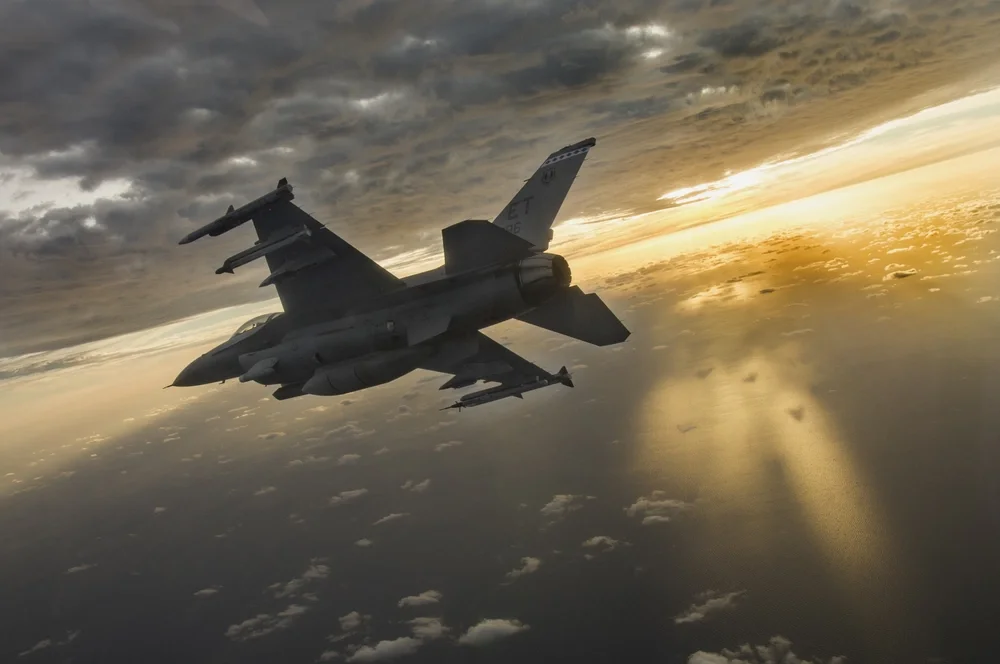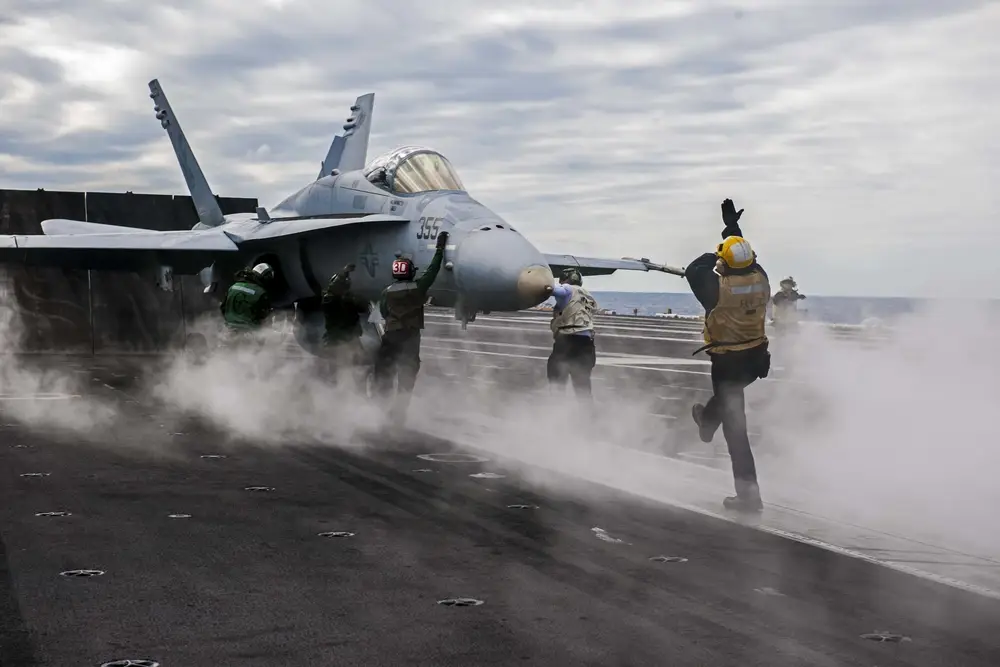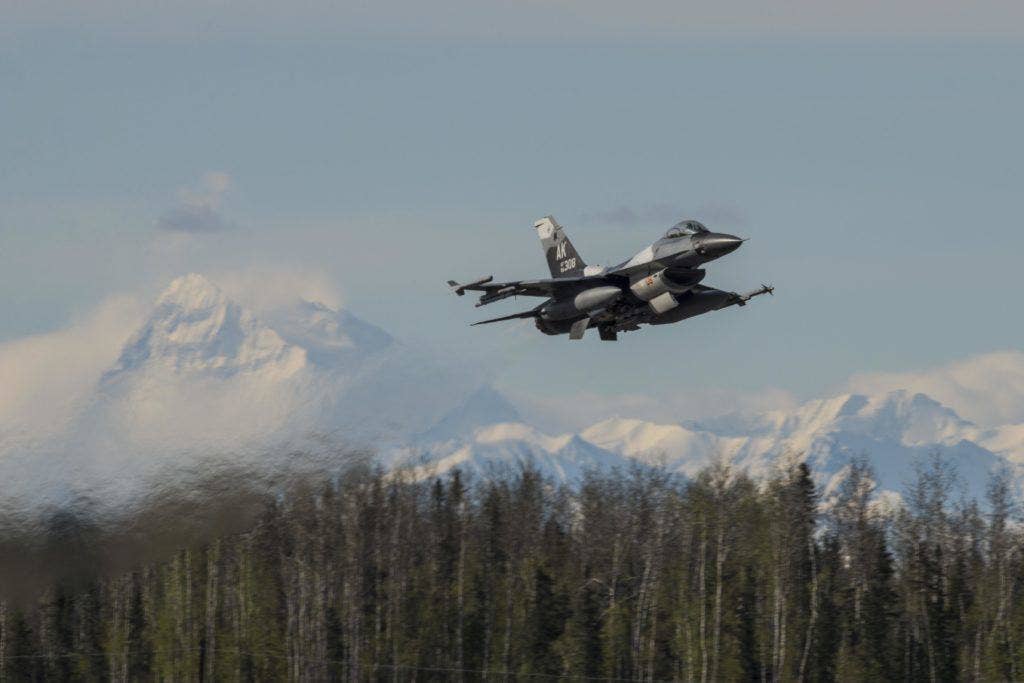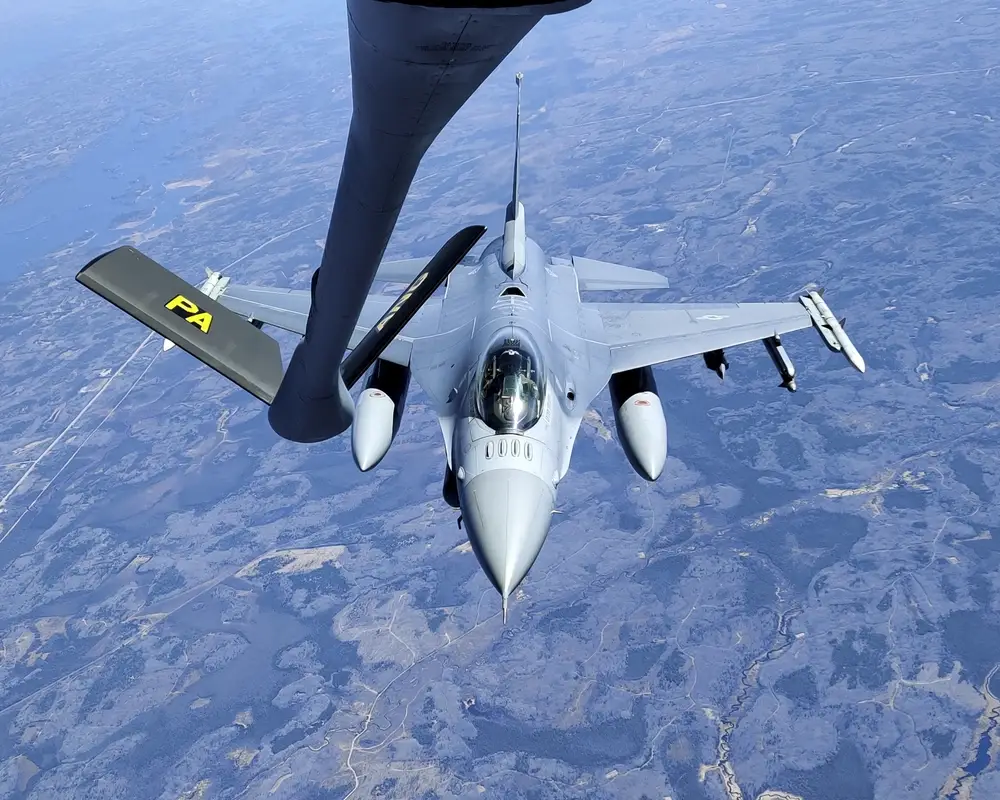
The F-16 Fighting Falcon and the F/A-18 Hornet are both “lightweight” fighters. Each was intended to complement a larger, heavier fighter (the F-15 for the F-16, the F-14 for the F/A-18). But they also have some big differences. Let’s look over some of them.
1. The number of engines
The F-16 has one engine – the F/A-18 has two. This is largely due to their differing operational environments. The F-16 operates from land bases, while the F/A-18 operates primarily from carriers.
Of course, this also bears a lot on survivability. If an F-16 loses an engine, the pilot’s gotta grab the loud handle. An F/A-18, on the other hand, can limp back to the carrier.
 An F/A-18 Hornet assigned to the Gladiators of Strike Fighter Attack Squadron (VFA) 106 prepares to launch from the flight deck of the aircraft carrier USS Theodore Roosevelt (CVN 71). Theodore Roosevelt is underway preparing for future deployments. (U.S. Navy photo by Mass Communication Specialist Seaman Apprentice Alex Millar/Released)
An F/A-18 Hornet assigned to the Gladiators of Strike Fighter Attack Squadron (VFA) 106 prepares to launch from the flight deck of the aircraft carrier USS Theodore Roosevelt (CVN 71). Theodore Roosevelt is underway preparing for future deployments. (U.S. Navy photo by Mass Communication Specialist Seaman Apprentice Alex Millar/Released)
2. Operating from a carrier
The F-16 is tied to land bases – its landing gear cannot handle the shock of hitting a carrier deck. On the other hand, the F/A-18 can readily shift between a carrier operation and flying from land bases.

A U.S. Air Force F-16 Fighting Falcon assigned to the 18th Aggressor Squadron at Eielson Air Force Base, Alaska, May 4, 2016, takes off from the base during RED FLAG-Alaska (RF-A) 16-1. Aggressor pilots are trained to act as opposing forces in exercises like RF-A to better prepare U.S. and allied forces for aerial combat. (U.S. Air Force photo by Staff Sgt. Joshua Turner)
3. Initial weapons suite
Did you know the F-16 originally didn’t have any radar-guided missiles? Aviation historian Joe Baugher notes that early A/B versions (Blocks 1, 5, 10, and 15) didn’t have the ability to fire the AIM-120 AMRAAM or AIM-7 Sparrow. The Block 15 ADF was the first version to carry a radar guided missile, the AIM-7.
The F/A-18, though, could carry radar-guided missiles from day one. This was because while the F/A-18 was replacing an attack plane, it was also intended to help defend the carrier.

An AIM-120 AMRAAM being loaded onto an F-16CJ. | US Air Force
4. Pure speed
The F-16 has a top speed of Mach 2.0. The F/A-18 can only reach Mach 1.8. Still, these planes are both very fast when they need to be. But in a pure drag race, the F-16 will win – and by a decent margin.

U.S. Air Force photo/Staff Sgt. Christopher Ruano
5. How they refuel
The F/A-18 uses a probe to latch into a drogue. The good news is that it can use just about anyone’s tankers – even USAF tankers, which are modified to carry drogues in addition to their booms.
The F-16s in the United States Air Force inventory, though, have a receptacle for the boom from a KC-135, KC-10, or KC-46 to plug into. Part of this is because the Air Force also has to refuel big bombers and cargo planes that need a lot of fuel quickly – and the boom can do just that.

An F-16 “Falcon” aircraft assigned to the 115th Fighter Wing in Madison, Wi. trails behind a KC-135 “Stratotanker” aircraft assigned to the 171st Air Refueling Wing in Pittsburgh Pa. while making an approach to receive fuel. Both aircraft are participating in an exercise conducted by NORAD near the northern United States border. (U.S. Air National Guard photo by Staff Sgt. Jacob Hatcher)